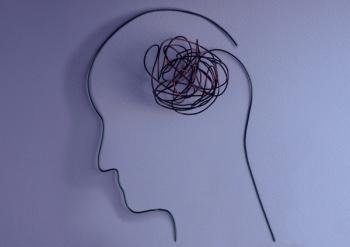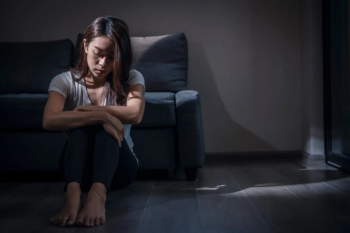
- Vol 34 No 5
- Volume 34
- Issue 5
Supportive Psychotherapy in Everyday Clinical Practice: It’s Like Riding a Bicycle
Supportive psychotherapy can serve as the first bridge out of social isolation and marginalization and addresses personality issues, such as deficits in character structure and defense mechanisms.
Supportive psychotherapy occurs in almost every doctor-patient encounter and is the psychotherapy provided to the vast majority of patients who are seen in psychiatric clinics and mental health centers. Yet very few scholarly articles are written that help explain its principles or how it works.
In the late 19th century, Freud began to develop the techniques of psychoanalysis, which served as a foundation for all the other psychotherapeutic modalities. Most of Freud’s patients were members of the upper classes of Viennese society and had significant ego strengths, and their problems were mainly intra-psychic. In contrast, many of the patients seen by psychiatrists and residents today suffer from extra-psychic problems, such as poverty, social and political oppression, and abuses of power in relationships that threaten to overwhelm their coping capacities. For these patients, supportive therapy is the treatment of choice.
Supportive psychotherapy is a dyadic treatment that uses direct measures to ameliorate symptoms and to maintain, restore, or improve self-esteem, ego functions, and adaptive skills. It was developed in the early 20th century, and its objectives are more limited than those of the psychodynamic therapies. This therapeutic modality focuses especially on developing adaptive capacities that take into account the patient’s limitations, including:
• Personality issues, such as deficits in character structure and defense mechanisms
• Native ability (eg, impaired reality testing, decreased cognitive functioning, lower IQ, learning disabilities)
• Problems associated with life circumstances (eg, lower levels of education, low socioeconomic status, limited social support systems, problems related to migration)
The connection between mental illness and poverty
There is a 2-way connection between mental illness and poverty. Poverty increases the risk of mental illness, and mental illness is often a person’s path into poverty. In 1965, the sociologist Oscar Lewis published the controversial document “The Culture of Poverty,” in which he argued that to adapt to their environment, people who live in poverty for a long time develop a series of coping mechanisms that become engrained and paralyzing and that affect the individual, the family, the slum community, and the community in relation to society.
Supportive therapy can serve as the first bridge out of social isolation and marginalization, since the 2 most important elements of supportive therapy are the
Supportive therapy is also the treatment of choice in individuals with severe personality disorders, at least in the initial phases of treatment. Many individuals with personality disorders resent and fear the power differential that results from a more analytic stance, given that many of them have experienced abuses of power in early life. If the power differential is not addressed early in the treatment, it can destroy the therapeutic relationship.
Understanding supportive psychotherapy
Most psychotherapies rely on the therapeutic alliance, but in supportive psychotherapy it is considered the most important element. When practicing supportive psychotherapy, one must negotiate a therapeutic alliance that preserves the authority, voice, and agency of the patient and ensures that he or she is active in the treatment. In patients who have chronic disorders, unsatisfactory living conditions, and little hope for change in their lives, the therapist represents a figure of
The therapist takes into account the patient’s cognitive abilities, reality testing, thought process, capacity to organize behavior, affect regulation, and capacity to relate to others in order to determine the patient’s location on the continuum. Purely supportive interventions are chosen for patients with disorganized behavior, thought disorder or cognitive impairment, limited intelligence, and lower levels of education and socialization and for patients with personality disorders. With less impaired patients, expressive therapies are used. It is important for the therapist to be hopeful that the impaired patient can eventually move across to more psychodynamic supportive therapy and beyond.
Affect regulation is one of the most important goals of supportive psychotherapy. More regressed patients commonly have difficulties with affect regulation, which produces a state in which the patient cannot attend or think and which interferes with the capacity to self-reflect. The therapist must attend to the patient’s physical comfort in therapy and try to avoid interruptions and phone calls during the sessions; establish conditions of emotional safety, such as addressing issues of substance abuse, self-harm, and domestic abuse; and avoid an interrogation stance.
Supportive psychotherapy practice
In contrast to more psychodynamic-oriented therapies, one must be careful not to be incisive when practicing supportive therapy with more vulnerable or regressed patients. Clarifications, interpretations, and confrontations may embarrass the patient, increase the patient’s anxiety to a level that he or she is incapable of modulating, and may reawaken memories of abuse. These interventions are more appropriate for treating patients with neurotic defenses that are analyzed and examined and the conflicts underlying the defenses identified.
A strong
Other important techniques used in supportive psychotherapy include behavior goal setting, encouragement, positive reinforcement, shaping behavior, and modeling. Children respond to the influence of their parents by imitating them and gradually by internalizing aspects of the parents by the process of identification. They later identify with other important figures in their lives. Some key aspects of these identifications include the development of a stable sense of self; a capacity to modulate anxiety so that it does not lead to defensive distortions of reality; a benevolent conscience that allows for a reasonable pursuit of pleasure without unreasonable guilt; and a capacity to love without fearing a loss of the self in experiences of fusion, or of excessive anxiety in the face of separations. For change to take place in therapy, interpretive work needs to occur with the patient’s increasing capacity for self-reflection, but modeling by the therapist provides some of the first and most fundamental building blocks for change.
Supportive therapy may include educating the patient and family members about the illness and about the patient’s potential and limitations, establishing realistic goals, addressing issues in the life of the patient that will reduce stress and anxiety, and helping the patient and the family improve their adaptive skills. It may also include limit setting and appropriate reward and punishment with children, and helping the patient, the family, and others involved to understand the patient’s functional and cognitive limitations.
Conclusion
It is important to take into account barriers to treatment such as economic, geographic, cultural, and stigma-related issues; distrust; and past persecutory experiences. Idioms of distress are the characteristic way in which members of different cultures describe what is wrong and which may differ from the expressions found in mainstream American culture. It is also very important to explore the patient’s history for adverse life events and to listen to the metaphors or therapeutic stories for adverse previous personal and medical experiences. In many cases, the patient’s “life-meaning story” is closely related to previous traumas that account for treatment resistance. In some cases, the patient fears a repetition of these traumas, such as in the case of psychiatric hospitalization, which may elicit fears of oppression, abuse, and incarceration.
Acknowledgment-I am grateful to David Lopez, MD, and Jennifer Downey, MD, of the
For further reading
• Applebaum AH. Supportive psychotherapy. J Lifelong Learn Psychiatry. 2005;3:438-449.
• Dohrenwend BP, Levav I, Shrou PE, et al. Socioeconomic status and psychiatric disorders: the causation- selection issue. Science. 1992;255:946-952.
• Kanzer M, Glenn J. Freud and His Patients. Northvale, NJ: Jason Aronson; 1993.
• Lewis O. Culture of poverty. In: Moynihan DP, ed. On Understanding Poverty: Perspectives From the Social Sciences. New York: Basic Books; 1969:187-220.
• Pumariega A, Rothe EM, Mian A, et al. Practice parameters for cultural competence in child psychiatric practice. J Am Acad Child Adolesc Psychiatry. 2013;52:1101-1115.
• Rothe EM. A psychotherapy model for treating child and adolescent refugees caught in the midst of catastrophic situations. J Am Acad Psychoanal. 2008;36:625-642.
• Werman DS. The Practice of Supportive Psychotherapy. New York: Routledge; 1988.
• Winston A, Rosenthal RN, Pinsker H. Introduction to Supportive Psychotherapy. Arlington, VA: American Psychiatric Press; 2004.
Disclosures:
Dr. Rothe is Professor of Psychiatry and Public Health at the Herbert Wertheim College of Medicine, Florida International University, Miami, Florida, and Immediate Past Chair of Scientific Programs, American Academy of Psychoanalysis and Dynamic Psychiatry.
Dr. Rothe reports no conflicts of interest concerning the subject matter of this article.
Articles in this issue
over 8 years ago
Introduction: More Dives and Intellectual Jujitsuover 8 years ago
Are We Overdiagnosing and Overtreating ADHD?over 8 years ago
Solaceover 8 years ago
The Quiz: Low Back Painover 8 years ago
Medically and Psychiatrically Complicated Patientsover 8 years ago
Challenging Consultationsover 8 years ago
Tardive Dyskinesia: Finally Some Good NewsNewsletter
Receive trusted psychiatric news, expert analysis, and clinical insights — subscribe today to support your practice and your patients.

















